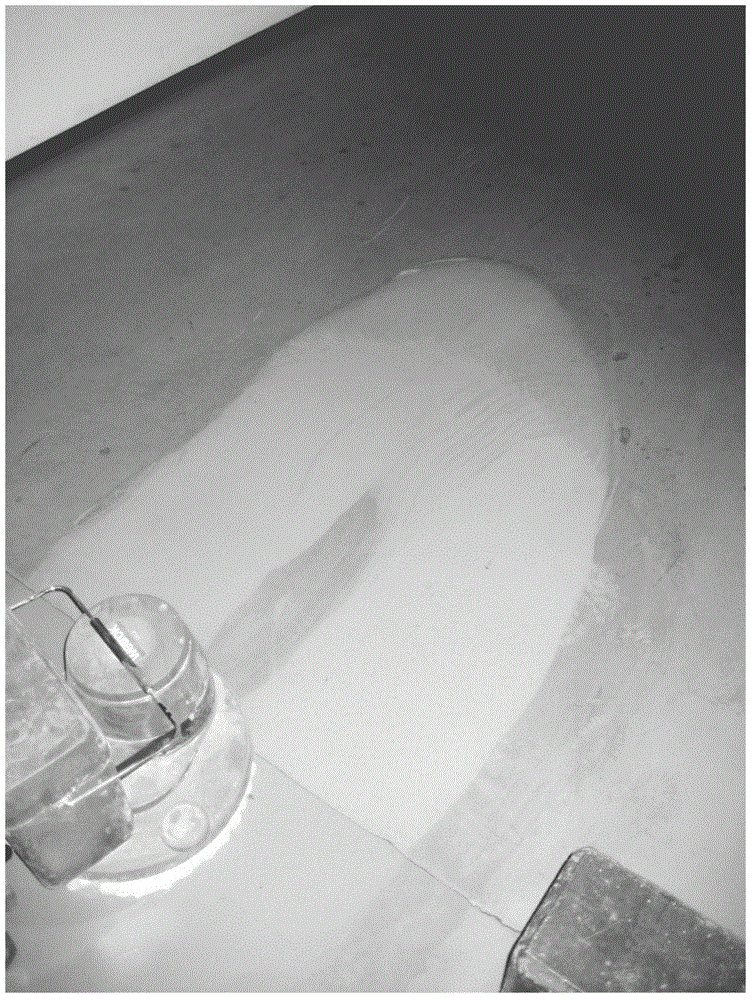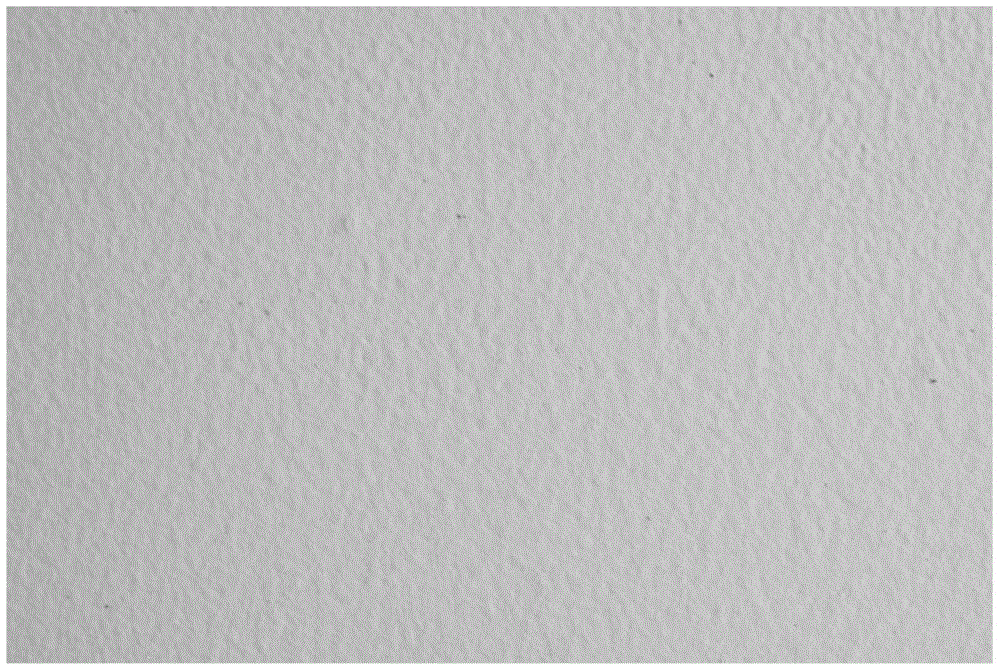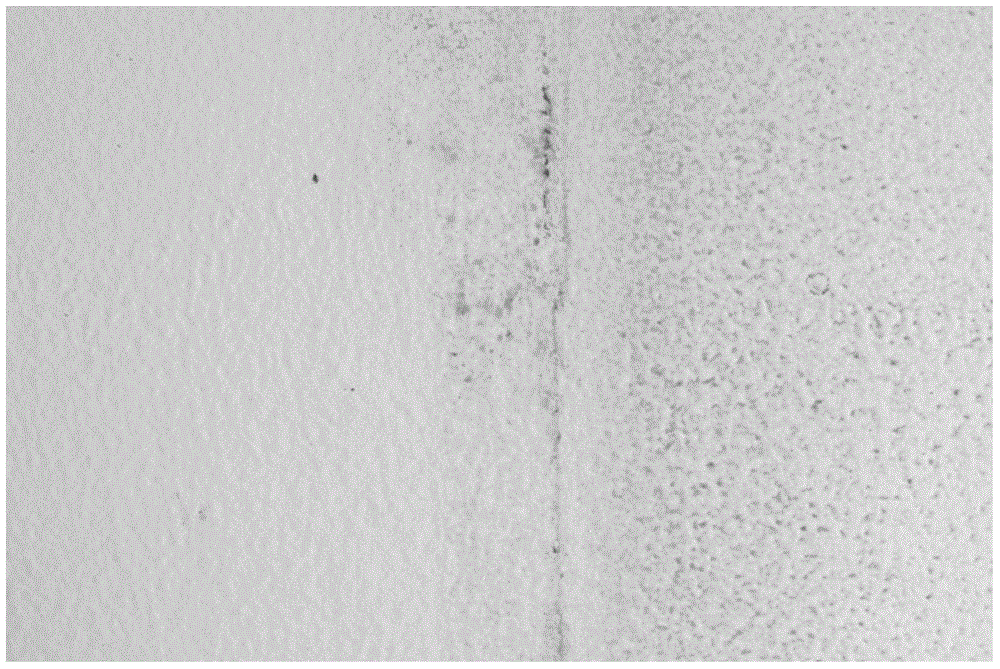Composite material, manufacturing process therefor and uses thereof
A technology of composite materials and composites, applied in the field of composite materials, can solve problems such as abrasive floor cleaning pads that cannot adapt to the irregularities of the floor surface
- Summary
- Abstract
- Description
- Claims
- Application Information
AI Technical Summary
Problems solved by technology
Method used
Image
Examples
Embodiment 1-6
[0174] Examples 1-6: Evaluation of pads comprising composites according to the invention with water only (i.e. without cleaning enhancing additives) on floors with few surface irregularities:
[0175] In Table 3 below is summarized the use of Servomatic 43KA mechanized floor cleaner (single pad speed 160rpm) and water (without any cleaning enhancing additives) for industrial floor cleaning M-F resins and 33cm (13in) diameter pads of composite materials A, B, C, D and E observations in the evaluation.
[0176] table 3:
[0177]
[0178] *Pads are cut from blocks of M-F resin without subsequent manufacturing thermocompression
[0179] All the pads evaluated were considered to be good for the cleaning effect achieved on epoxy floors with R10 non-slip surfaces, but the pads of composites of type C, D and E according to the invention exhibited significantly longer (i.e. greater than 3030m (1000m 2 )) of moving life, in comparison, the movement of M-F resin pad without s...
Embodiment 7-12
[0180] Examples 7-12: Evaluation of mats comprising composites according to the invention with detergent-containing water on floors with few surface irregularities:
[0181] In Table 4 below is summarized the use of Servomatic 43KA mechanized floor cleaner (single pad speed 160rpm) and water with detergent (5 Brix in 100mL in 3L of water, ie 0.17 Brix) M-F resins and A, B, C, D and E for industrial floor cleaning Observations in the evaluation of 33 cm (13 inch) diameter pads of type composites.
[0182] Table 4:
[0183]
[0184] *Pads are cut from blocks of M-F resin without subsequent manufacturing thermocompression
[0185] All the pads evaluated were considered to achieve a good cleaning effect on epoxy floors with an R10 non-slip surface, i.e. better than figure 1The cleaning effect with water (without the cleaning boost additive) was observed for pads of type D shown, but pads of composites of types C, D and E according to the invention exhibited significantl...
Embodiment 13-18
[0186] Examples 13-18: Evaluation of mats comprising composites according to the invention with water with detergent (5 Brix in 100 mL of water, ie 0.17 Brix) on floors with R10 non-slip surfaces :
[0187] Table 5 below summarizes the results obtained using NLL332 Mechanized floor cleaner (with reservoir but no water absorption) and water with detergent (5 Brix of detergent in 100 mL of 3 L of water, ie 0.17 Brix) M-F resin for cleaning non-slip R10 industrial floors As well as observations in the 33 cm (13 inch) diameter pad evaluation of Types A, B, C, D and E composites.
[0188] table 5:
[0189]
[0190] *Pads are cut from blocks of M-F resin without heat compression
[0191] All the pads evaluated were considered good for the cleaning effect achieved on non-slip R10 industrial floors, i.e. inferior to the cleaning effect achieved on smoother floors, and all pads were considered poor for their ability to cope with floor irregularities. At least good, the capa...
PUM
| Property | Measurement | Unit |
|---|---|---|
| density | aaaaa | aaaaa |
| density | aaaaa | aaaaa |
| density | aaaaa | aaaaa |
Abstract
Description
Claims
Application Information
 Login to View More
Login to View More - R&D
- Intellectual Property
- Life Sciences
- Materials
- Tech Scout
- Unparalleled Data Quality
- Higher Quality Content
- 60% Fewer Hallucinations
Browse by: Latest US Patents, China's latest patents, Technical Efficacy Thesaurus, Application Domain, Technology Topic, Popular Technical Reports.
© 2025 PatSnap. All rights reserved.Legal|Privacy policy|Modern Slavery Act Transparency Statement|Sitemap|About US| Contact US: help@patsnap.com



